Fayoum Gabal el Qatrani Pertified forest open air museum
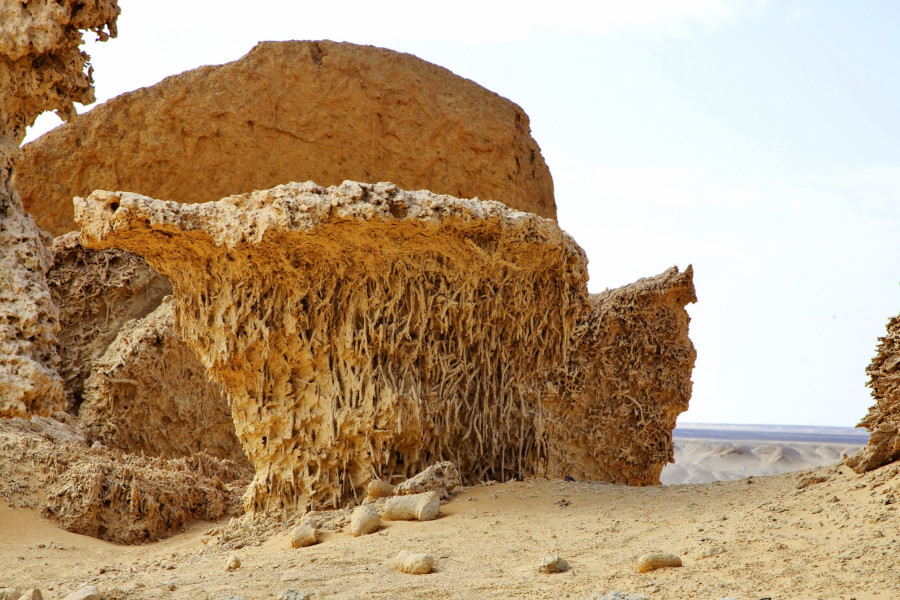
Where Gabal el Qatrani is located?
Gabal Qatrani is located north of Lake Qarun near the basalt quarries. The fossilized forest known as the petrified forest at Gabal el-Qatrani is located in Fayoum governorate. Here you find an open air museum that displays the remains not only of fossilized trees but also some fossils of creatures that lived in the forest in the past. If you are interested in geology then our day tour to Fayoum Petrified forest will meet your curiosity needs.
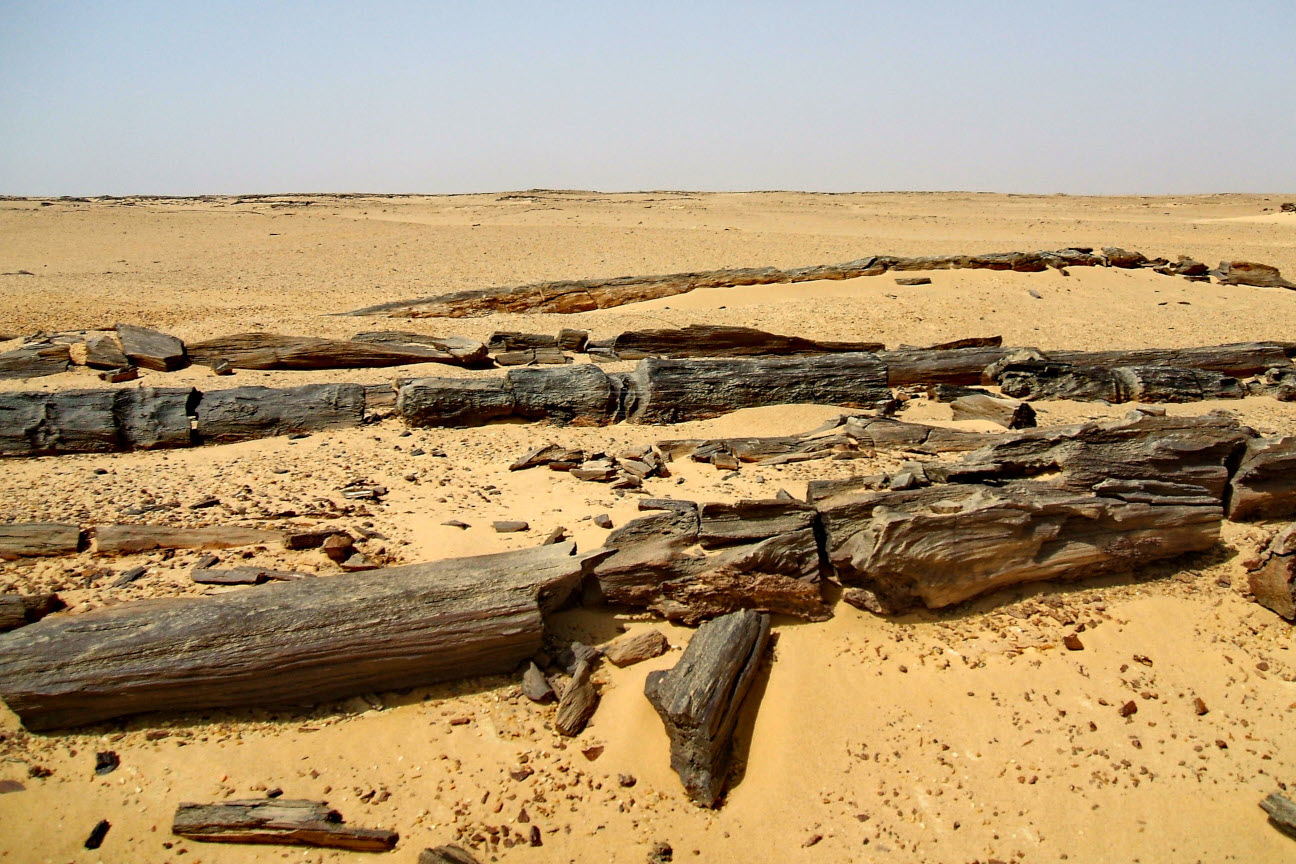
The petrified forest at Gabal el Qatrani
The petrified forest at Gabal el-Qatrani is one of the important geological places, not only in Egypt, but also in Africa. It is considered a perfect destination for geologists due to the fossils found here.: fossilized trees and land, sea creatures that lived in this part of the earth about 34 million years ago.
Oligocene (33 million years ago), where you can now see the traces of the "Petrified Forest" extending over an area of 30 square kilometers containing 22 species of trees with a number of about 1126 petrified trees, some of which reach 44 meters in length, including ancient remains of fruits and the fossilized leaves.
A number of large animals similar to those that currently live in the forests of Africa lived in that forest. The fossilized forest of Mount Qatrani shows 14 ranks of creatures out of the 28 ranks known so far.
Petrified wood logs occur at random in various localities of Gabal el-Qatrani Forest. They form "forests" consisting of a few to about 200 logs. The logs range in diameter from 15 cm to 2 m and in length from a few meters to more than 44 m. Small pieces of silicified wood are abundantly associated with the fossil logs. Upright boles of silicified trees are sporadically found at or just above the contact between the Oligocene Gabal Qatrani Formation and the Miocene Khashab Formation.
Fourteen wood species in eight angiosperm families (seven dicots and one monocot) have been reported from the Qatrani mountain area by Blanckenhorn in 1921, Kräusel in 1939, Wing & Tiffney in 1982, Dupéron–Laudoueneix & Dupéron 1995, El–Saadawi & Kamal–El-Din 2004, and El–Saadawi 2004.
Only one well preserved fossil reed from silicified culms had been reported from the same area.
At Petrified forest at Gabal el-Qatrani more than 20 species of fossil leaves have been recorded. Three of the reported leaf species belong to ferns ( pteridophytes ), two to monocots and all the rest are leaves of dicot plants. Also fossil fruits and seeds from several locaities were found there.
Fossil roots of small plants, medium-size plants, and large plants including trees are locally abundant in Gabal el-Qatrani area and are also well developed in Holocene lake margin sediments on the north shore of Qarun Lake.
The rhizoliths of Gabal el-Qatrani are known to be among the best preserved and most diverse in form of such structures yet recognized in the world. Roots and rootlets ranging in diameter from 2 mm to 2 cm are usually very abundant in the area.
The, hitherto, discovered palaeoflora of Gabal el-Qatrani area includes over 40 species of monocots, dicots and pteridophytes in addition to over 160 species of algae. This rich, highly diversified, and well-preserved palaeoflora (besides a wealth of discovered fossil fauna) makes this area one of the most important fossiliferous areas yet discovered in the world.
The petrified forest extends over an area of 50 kilometers containing about twelve species of trees, some of which reach 44 meters in length. They occurred due to violent geological events such as earthquakes, and there are traces of volcanoes that left basalt stones, and this is the origin of the place of ancient forests.
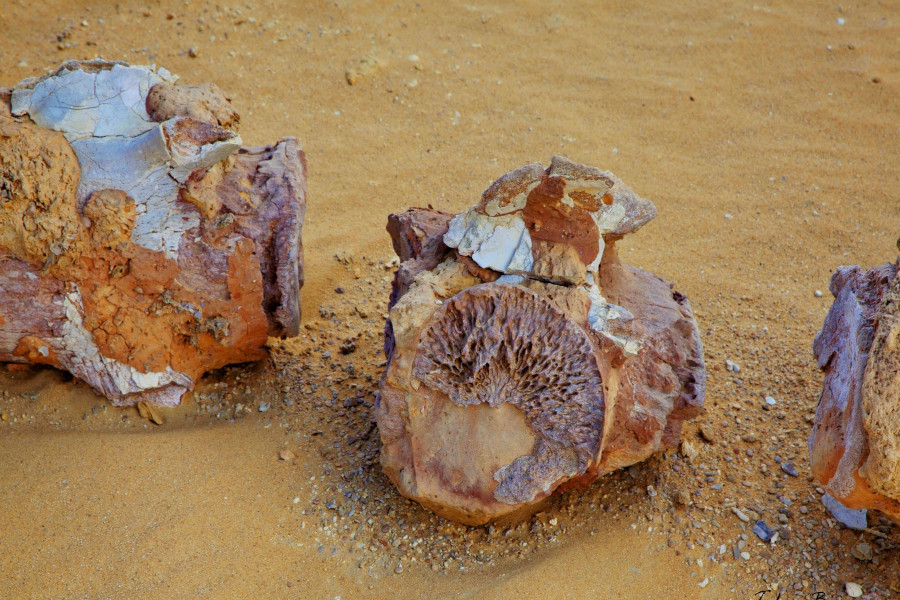
Famous findings at Gabal el Qatrani
As you go deeper into the forest, you will find the most famous monkey in the forest playing on one of the trees. It was discovered in the year 1965 and goes back to the beginning of knowing the ancestors of modern monkeys whose lineages trace back to man. There is also a skull of the ancient Egyptian monkey, Egyptus, one of the oldest breeds of monkeys in the world, and it was discovered in 1966.
The petrified forest includes fossils and trees dating back 33 million years. It is a tropical forest from the Oligocene era. It shows its visitors a kind of extinct animals such as the Fayoum elephant "Phioma", animals that have hardened in the desert an became fossils.
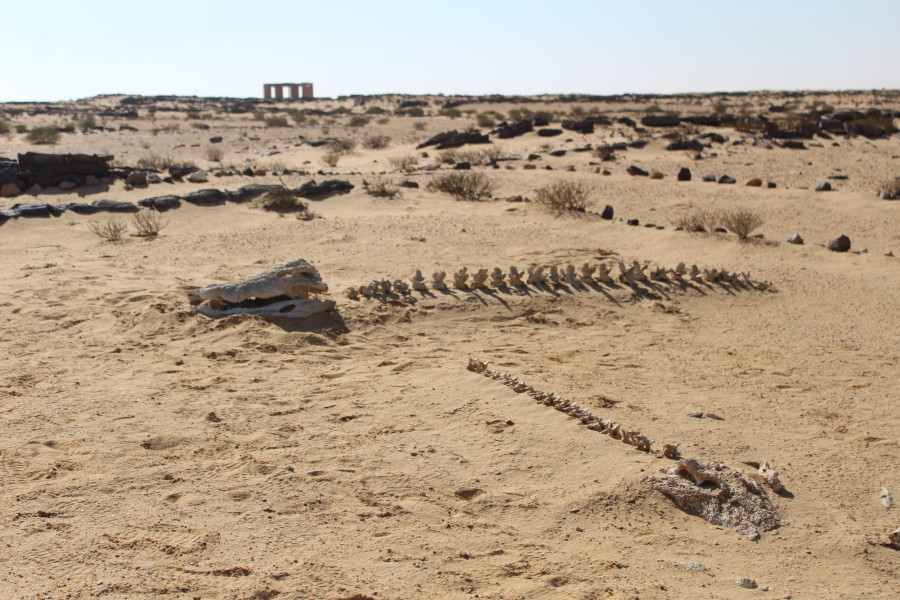
Gabal el Qatrani Open air museum
The open air museum at Gabal el-Qatrani consists of 3 different basic eras for three different environments.
Fossils of the mermaid Serenia, similar to the Dogong found in Marsa Alam and Hurghada in the Red Sea, are millions of years old. They were discovered in the fossilized forest of Tar mountain in the western Fayoum desert.
Among the fossils that are found in the petrified forest are the ancient Egyptian whale, which is more than 30 million years old, the skeleton of a crocodile, which is not very old, as it is modern and is about 200 thousand years old. Beside other water animals such as a crocodile and a marine river whale from a completely different environment.
This indicates that in the past, there was a river and a sea in this now petrified desert forest at the same time, which is when the sea is confined, the river comes and vice versa in an unusual tropical environment, containing marine, land and river animals at the same time in addition to trees whose length exceeds 44 meters inside the forest .
The museum also includes the most famous fossil in the world located inside the museum, its age dates back to about 33 million years. There is the rock rabbit, which is the ancestor of elephants and its size is larger than the current elephant in our time. An ancient Fayoum animal was discovered in the area in 1905 and it looks like a rhinoceros and has 4 horns and is not found anywhere else in the world. Fayoum has proven to the world that it is a destination for paleontologists to study. The origin of the universe is Fayoum.
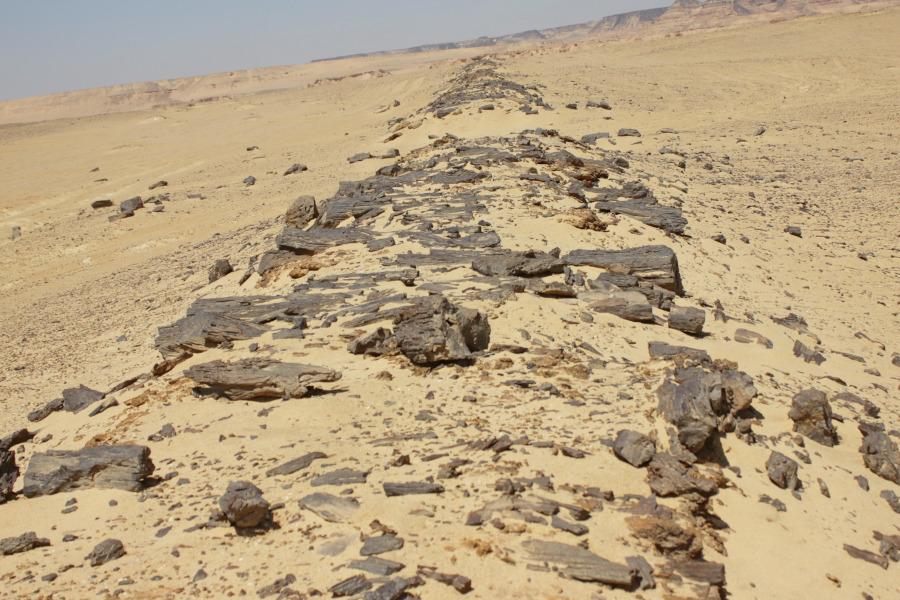
The oldest paved road of Fayoum
The oldest paved road in the world north of Lake Qarun, specifically near Gabal Qatrani in the western desert of Fayoum, from the era of the Old Kingdom, that is, more than 4,500 years ago, and its length is about 11.5 kilometers. It is the first paved road that was prepared to transport basalt blocks from the top of Mount Qatrani to the port of loading on ships or boats southwest of the Qasr Al Sagha Temple, where the waters of Lake Qarun reached this site in the era of the Old Kingdom, then these stones were carried on ships in the ancient Fayoum Lake, And from there to the Nile River to reach the facilities that were erected by the kings of the Fourth and Fifth Dynasties in the era of the Old Kingdom in Giza.
This road was classified as the first and oldest paved road in the world, according to what was indicated by a map from 1905 of the geologist "Howe Bednal", who confirmed that this road is the first and oldest paved road in the world, and it is an unconnected road, and the remainder of it is only about 14 parts, and that by the factors of erosion and time.
The road had branches within the ancient basalt quarries, whether eastern or western, and the road was established at the closest distance between Gabal Qatrani and Qasr Al-Sagha, where the shore of Lake Morris Qarun is currently located, and the road retains about 5.5 kilometers of its old structure. And that basalt stones were used in the construction of the floors of the funerary temples of the hierarchical groups in the pyramids area, including the pyramid of "Khufu".